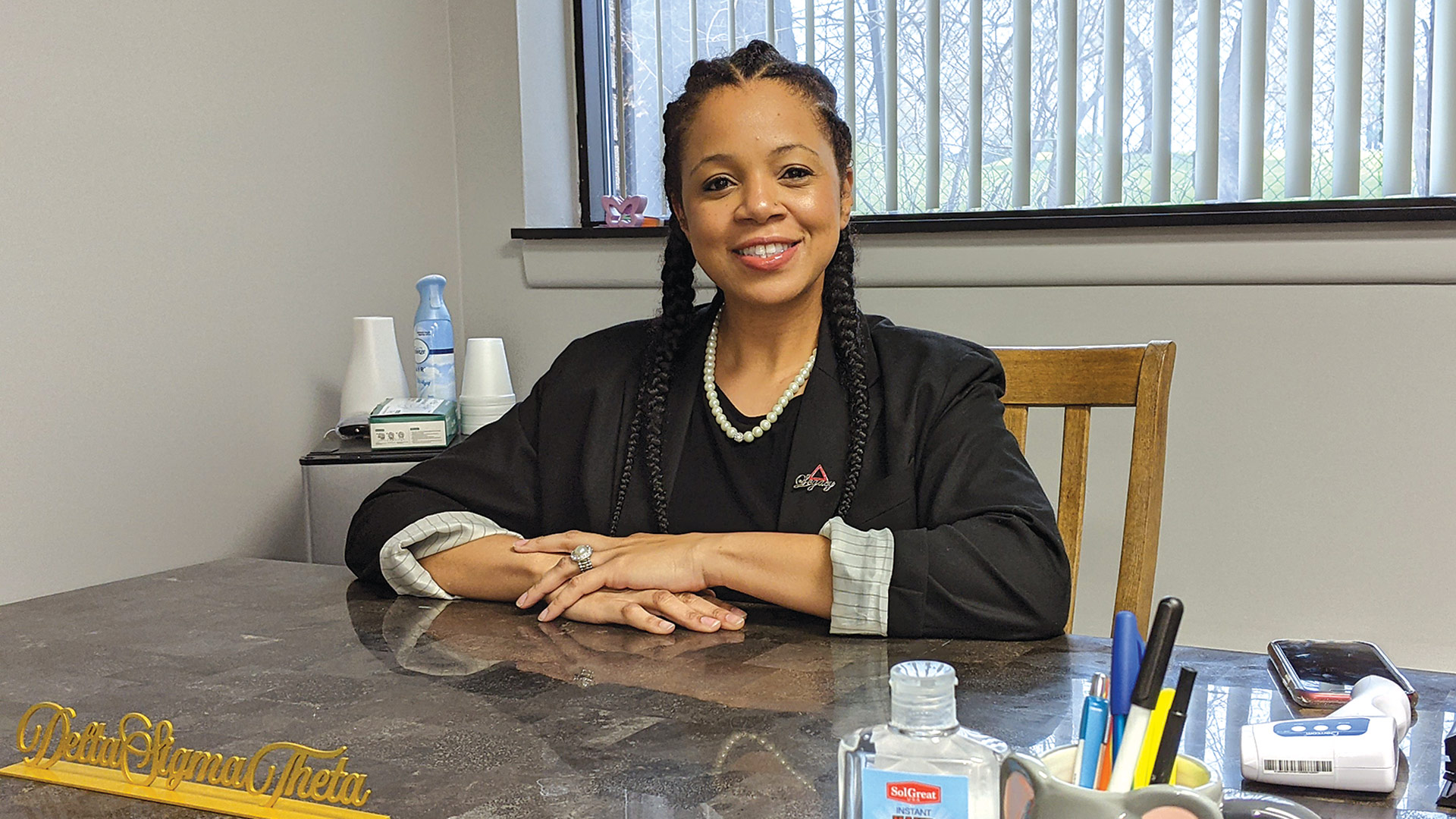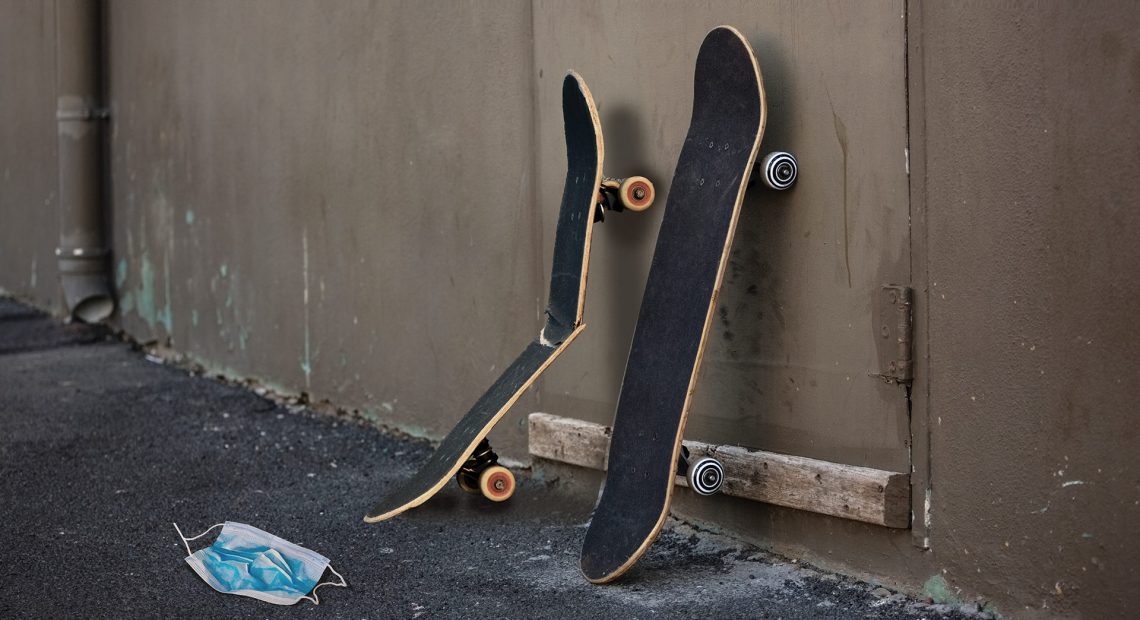Youth in Crisis
Let’s face it — the past year of COVID-19 has probably been tough on you, in any number of ways that weigh on your peace of mind. But what about your kids? How are they doing? And … do you even know? That might seem like a flip or aggressive question, but a group of local teenagers who have been talking to public-health leaders about the issue say their parents aren’t fully hearing them when it comes to the impact of the pandemic. And that impact, in many cases, has been worrisome.
Alane Burgess began by stating the obvious.
“It’s not normal for kids to be home all the time.”
As clinic director of the BestLife Emotional Health & Wellness Center, a program of MHA Inc., Burgess is one of many healthcare professionals keenly invested in how the COVID-19 pandemic has impacted young people. And the picture is worrisome.
“They like to be out. They like to socialize. Most kids like to be with friends,” she said. “COVID forced isolation on a lot of people; they haven’t been able to go to school, to socialize, to be involved with activities they once loved, like sports. Community spaces haven’t been open.”
It’s not surprising, she added, that this isolation has contributed to an uptick in anxiety, depression, frustration, and a tendency to act out in negative ways.
Indeed, according to the Centers for Disease Control and Prevention, between April and October 2020, hospital emergency departments saw a rise in the share of total visits from childen for mental-health needs. Nationwide numbers on suicide deaths in 2020 are still unclear, but anecdotal evidence suggests an uptick.
“Kids are excited to go back and see their friends and have some sense of structure, to be in society again. But there are definitely a lot of adjustments to be made.”
But here’s the less obvious reality, Burgess noted: while the pandemic may be (and that’s may be) on its last legs and schools and other gathering places are slowly opening back up, that doesn’t mean the stresses of the past year will just fade away.
“Kids are excited to go back and see their friends and have some sense of structure, to be in society again,” she told BusinessWest. “But there are definitely a lot of adjustments to be made.”
When COVID struck, she noted, the shifts were quick and unplanned — kids were suddenly learning at home, and many of their parents were suddenly working there. It has been a challenging time, particularly for working parents with young children who need help with school.
But transitioning back to whatever will pass for the new normal poses its own challenges, she said. “It was originally going to be two weeks, and weeks turned into months, and months became a year. Now, they’re going back out into a world that’s changed; it’s not going to be the same — there will be masks and social distancing and limitations on clubs and activities.”

Tamera Crenshaw says barriers to accessing mental healthcare are myriad.
Socially, certain young people — those with a more introverted personality — found they thrived in the remote setting, and are anxious about returning to campus, Burgess added. Others found the home setting to be an escape from bullying, and are palpably fearful about going back.
Meanwhile, some students, depending on how rigorous their remote-learning experience was, might find themselves overwhelmed or feeling academically behind as teachers play catch-up. Many students report coasting to passing grades, even very good grades, while feeling they haven’t been learning much.
And the economic struggles affecting many families who lost income or jobs — a definite stressor on kids — certainly aren’t over.
Tamera Crenshaw, a clinical psychologist and founder of Tools for Success Counseling in Longmeadow, said she’s especially passionate about mental health in minority populations, a demographic disproportionately affected by mental-health issues — because, again, those issues tend to be exacerbated by factors like economic stress, which have also landed hard on those populations during COVID-19.
Even remote learning has been a greater problem for communities of color because of issues of technological access and family strife over financial matters, she added. “Home isn’t necessarily the most conducive learning environment — and COVID just exacerbated it.”
An uptick in suicidal ideation is especially concerning, Crenshaw said. “Someone can have a baseline of thought, but when kids are actually expressing a plan or intent, it’s scary. And we’re definitely seeing an increase.”
Some of the factors are typical stressors on teens in any given year, but despondency has certainly been driven by greater economic instability, which can raise tension and anxiety in the home, as well as two competing factors: a longing to end a year of isolation and get back to school, and health fears about the safety of doing so, especially for kids who know someone who has died of COVID.
“These kids have not been forgotten, but even with a vaccine, they’re going to be vaccinated last,” she noted. “I can’t imagine there’s not a fear of going back into the school environment when they haven’t been vaccinated.”
The issues are deep and complex, and solutions aren’t easy. But, like most others in the mental-health field, Crenshaw says the first step to helping young people take charge of mental-health issues is clear and simple.
“You’ve got to name it.”
Start the Conversation
That means breaking through societal stigma surrounding these struggles.
“My mission is to destigmatize mental health,” Crenshaw said, noting that several factors contribute to that stigma and the resulting reluctance to seek help. “I want to help debunk that stigma.”
Beyond attitudes toward mental health, another barrier is financial — the challenge of accessing insurance that will pay for treatment, or, for those who don’t have it, navigating out-of-pocket costs while already struggling economically, she added.
“It was originally going to be two weeks, and weeks turned into months, and months became a year. Now, they’re going back out into a world that’s changed; it’s not going to be the same — there will be masks and social distancing and limitations on clubs and activities.”
A third factor is religious belief, specifically a belief by some churchgoers that mental-health professionals are at odds with faith, or that faith makes such help unnecessary. “We’re trying to educate churches and knock down that barrier,” she said. “I’m a woman of faith myself.”
Another factor is the simple fact of how few therapists of color are working today. Crenshaw’s team is largely women of color, but her practice is an exception — which is unfortunate because she knows people of color will often have an easier time trusting someone right off the bat when they can relate to them or see themselves in them.
This last factor might be a long-term struggle to overcome, she added, noting that she teaches classes in her field at Westfield State University, and none of the 17 students currently in one of her classes is a woman of color.
In fact, the mental-health and social-work fields in general are in need of more talent, said Jessica Collins, executive director of the Public Health Institute of Western Massachusetts (PHIWM). She agreed about the access issue as well, noting that mental health should be a basic support, not something available only for people who can pay for it — especially when families who can’t pay are often in greater need of those supports.
Recognizing the importance of these issues among young people, before the pandemic even began, the Public Health Institute facilitated the formation of a youth mental-health coalition in Springfield — one that brings to the table direct service providers like BHN and Gándara, Springfield Public Schools, local therapists, and, critically, a group of 11 teenagers who meet regularly.
The question at the center of the initiative is simple, Collins said. “How do we best support kids? It might sound basic, but it’s fairly new; there has not been an emphasis on the mental health of kids except in extreme cases, where the kids have to go into inpatient care.”
One takeaway so far is that teens don’t feel fully heard by the distracted adults in their lives.
“What we’re hearing, loud and clear, from our young people is, when they talk to adults, adults are not skilled at supporting them,” Collins said. “Adults are stressed, adults are stretched, and that just adds to this epidemic of young people feeling hopeless and alone and unsupported.”
That’s why the Public Health Institute is talking about what kind of training adults — those who work in preschool and school programs, but also parents — might need to learn how to better listen to young people and work through and respond to what they’re hearing.

Jessica Collins says parents sometimes get so stressed, they don’t realize how stressed their kids are, too.
“These big direct-service providers are really competitive, so to get them in a room to talk about how can we work together to better support families, instead of just competing for them, that’s fairly new,” Collins said, adding that Daniel Warwick, Springfield’s superintendent of Schools, has also been on board with efforts like this for a long time.
For example, when he saw a 2017 report by PHIWM about the hopelessness felt by local teens who don’t identify as heterosexual, “he was so upset about that, a few years ago, he mandated some training for all Springfield public-school adults to better support kids who are LGBTQ+.”
Take It Seriously
That’s a good example of listening to young people and then taking them seriously — which is one way to normalize mental-health needs, Collins said. “If you can’t talk about it, you can’t figure out for yourself what you need.”
And one thing young people need right now is reconnection. While many kids are tired of the technology-only avenues for connecting with friends, Crenshaw said, Zoom calls, text chats, and the like have been an overall positive in staying in touch. But she also encourages kids and families to take opportunities to see friends and loved ones in person, in a safe manner, when possible.
“You can go to the park; you can go outside with a soccer ball, wear your mask, and connect. Some families have said, ‘we can’t do this alone,’ and became part of each other’s bubble, taking turns doing homeschooling. We encourage these ways of connecting with each other.”
And don’t give up on trying to talk to your kids, Burgess said, even when they don’t feel like talking back.
“The most important thing any parent can do during these times is open a dialogue with their children and allow kids to have open communication,” she said. “What are they thinking? What are they feeling? Then we can guide them and help them through their own resiliency and make adjustments.”
Families can help combat their kids’ isolation, she said, by planning quality family time, even if it’s just having dinner together, around the table, every night, or scheduling a family game night every week. Those moments, she noted, can naturally help kids let their guards down.
“You want to have that quality time, that open communication to talk and listen to your kids and ask, ‘how are you feeling? What’s going on? What can I do to help make things easier?’ Sometimes, as a parent, we’re not able to say ‘yes’ to everything, but we can look for compromises and help kids make some of the decisions.”
The problem in identifying signs of distress, Crenshaw said, is that teenagers, even on their best days, often prefer to be isolated, or present a sullen demeanor. So how can parents separate normal teen ‘attitude’ from real warning signs?
“Are they communicating as much with you, or are they isolating in their rooms moreso than normal? Are they eating normally?” she asked. “Even prior to COVID, parents would say, ‘I didn’t know there was a problem — I thought that’s how kids are.’”
It doesn’t hurt for parents to simply ask their kids, directly, how they’re feeling, what’s working or not working in their lives, how school is going, and if they’re feeling more anxiety than usual. “If a teen is isolated in their room, that could be typical teen behavior, but maybe not.”
Physical signs may be visible, too, Crenshaw said, noting that cutting — what’s referred to in her field as ‘self-injurious behavior’ — and eating disorders are more common than some parents think.
But more often, the signs are subtler. “It’s just really knowing their disposition and what they’re involved in.”
Burgess said it’s important for parents not to go it alone if their gut tells them something is truly wrong.
“If you notice your kid struggling with severe signs of depression — really isolating, really struggling — definitely seek professional help. If your kid is talking about suicide or even just having a hard time getting back into interacting or adjusting, seeking professional help is always key.”
In the end, coming out on the other side mentally healthy — and that goes for parents and children alike — will take patience and resilience, Burgess added.
“There’s no guidebook for this. There’s no ‘COVID for Dummies’ book. We’re all doing the best we can to adapt. We’re all just going through an unprecedented time.”
Joseph Bednar can be reached at [email protected]






